Native trees and shrubs benefit wildlife greatly by providing food sources, shelter and the individual trees are mini habitats in their own right.
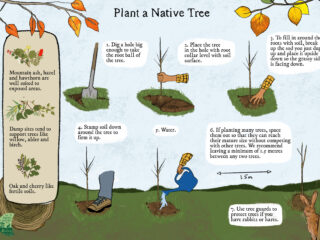

Native trees and shrubs benefit wildlife greatly by providing food sources, shelter and the individual trees are mini habitats in their own right.
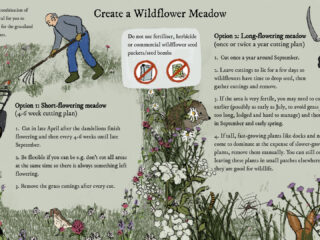
Flower-rich grasslands are one of the most threatened habitats in Ireland and are extremely important for wildlife – they provide food for insects, birds and small mammals and can store 500% more carbon than fields dominated by one grass species.
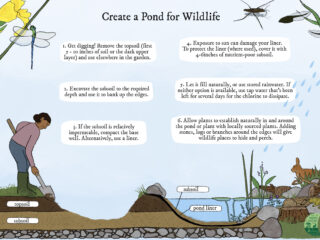
Ponds are great for wildlife and by providing one of the key needs of nature – water – can really boost biodiversity. They provide water for drinking and bathing, habitat for aquatic plants, invertebrates, frogs and newts, and will draw a wide variety of other wildlife.
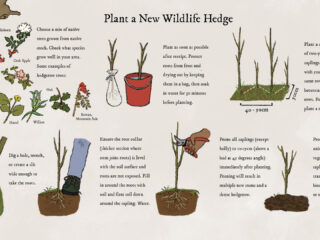
Hedgerows provide wildlife with food, nest sites and shelter. They are important highways for mammals, especially bats, birds and insects, as they move through the landscape. Woody shrubs and trees capture carbon and can help improve soil drainage.
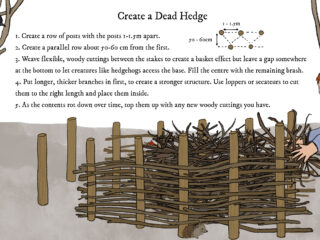
Dead wood is a whole ecosystem in itself, whether in the form of dead-standing trees, dropped branches, log or brash piles, and dead hedges. Spiders, slugs, snails, worms, beetles, springtails, flies and frogs will all use dead wood for shelter, with the invertebrates forming a key part of the food chain that will support amphibians, reptiles, birds and mammals.
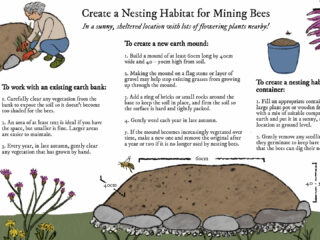
Around 80% of Ireland’s 80 solitary bees are miners which make their nests by burrowing in bare earth. You can create much needed nesting habitats for these mining bees by building, or managing existing, bee banks.
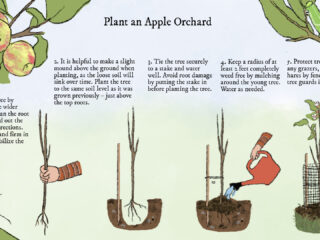
Fruit trees provide food for adult insects in the form of nectar, pollen and sap; and leaves for their larvae (e.g. caterpillars). They form and sustain part of the food web that will support birds and mammals.
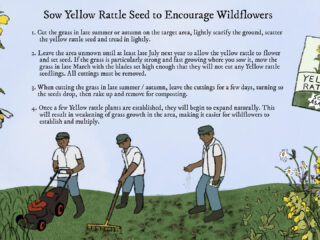
Yellow Rattle can help to create, and speed up the development of, grasslands rich in wildflowers. Wildflower-rich grasslands are extremely important for wildlife – they provide food for insects, birds and small mammals, improve soil biodiversity, and can store 500% more carbon than fields dominated by one grass species.
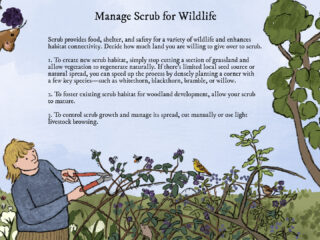
Scrub offers a layered structure with dense cover and small clearings, creating a highly diverse environment for wildlife.
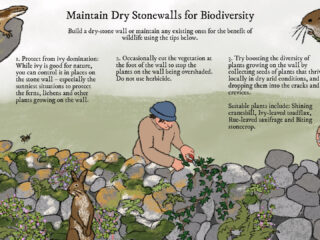
The nooks and crannies found in drystone walls provide shelter and nesting sites for animals from the tiniest invertebrates to amphibians, birds and small mammals.
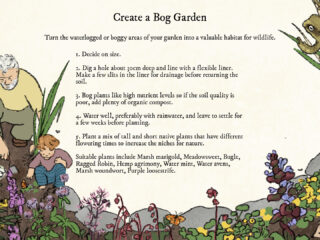
Turn the waterlogged or boggy areas of your garden into a valuable habitat for wildlife.

Approximately 20% of our solitary bees build their nests in cavities in the likes of stones, bricks and wood. Common examples are mason bees and leafcutter bees.